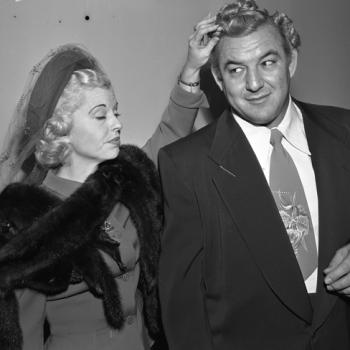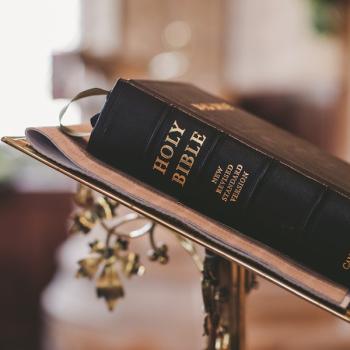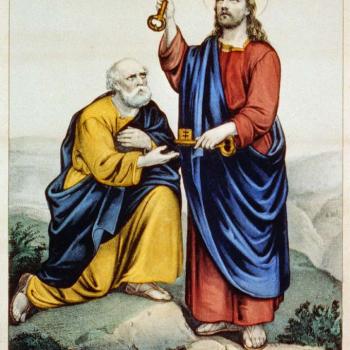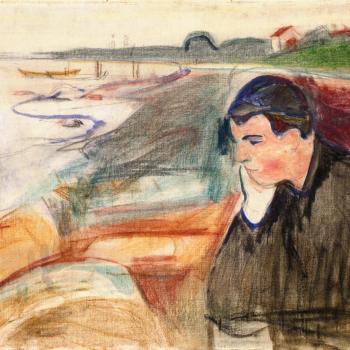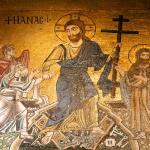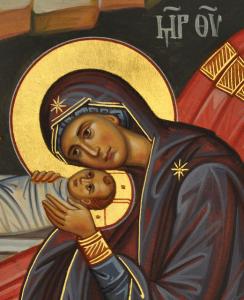
The following is a reflection by a dear friend of mine, Nathan Smolin, who is a PhD student in Classics at the University of North Carolina, Chapel Hill. I hope you will find it was beautifully written and incisive as I do.
“And coming into the house they saw the Child with Mary his mother; and falling down they worshiped him.” (Matthew 2:11)
A few weeks ago, I went into the Adoration Chapel, and sat down in the only place available. I looked towards the large, golden Monstrance at the front of the room, shaped like a sun with golden rays extending in all directions. At the center, the source of light and life, was a small, round pane of glass covering the face of God. Toward this face I looked and saw in it the face of a woman.
It took me a moment or two to figure out what I was seeing: the face of the Virgin Mary in the stained-glass window at the back of the room, reflected in the tiny pane of glass covering the Host.
My first reaction, I confess, was almost to recoil. There was a small statue of Mary to the left of the monstrance, yes, as there always was, but—here she was in a different place entirely, where I had turned to look for Christ, to look for God. There was something unsettling, something almost disturbing in this. Yes, Mary was important—but she was not supposed to be here, was she?
The first thought that occurred to me, I confess, came from my Protestant upbringing, and from the many conversations I have had since with Protestant friends about Marian devotion. If you have been a Protestant, or if you have had such conversations, you know that it always comes down, in the end, to this lingering sense of unease, this plaintive protest: Why does Mary have to keep getting in the way? Here I am, and here God is, and why does she have to be here, too? Why do I have to pay attention to her, why do I have to honor her? Why does she have to get between me and God?
For a moment, at least, this protest seemed fairly convincing.
Still, almost at the same moment, another fragment of memory came into my mind, from a prayer I cannot seem to recall in full or find with a google search: an address to Mary, saying, “We see your face in the face of God.” This always struck me as a remarkable, even shocking, thing to say about anyone. And here, again, was the face of Mary, superimposed, as it were, over the face of God visible in the Eucharist.
Still, unsettled as I was, I accepted it, and I prayed, and slowly, gradually, I came to realize how beautiful and good it was, and how beautiful and good it always has been, that Mary has stood between me and God, that she has gotten in the way, that she has been there, with me and God, through so many sufferings and trials and sins and needs, that I have seen her face reflected in the face of God, and the face of God reflected in hers. And when I realized that, I realized, once again, how good it is for us that God became man, and that he was born of a woman.
Man that is born of woman has few days, and full of pain; and many of those pains, if we are honest, come from his fellow men and women. We are born dependent, and we only grow more dependent as we grow stronger, the more basic dependencies for food and water and protection only being supplemented by more complex and intense additions. Most of all, we are born and remain dependent on fellow human beings for love.








